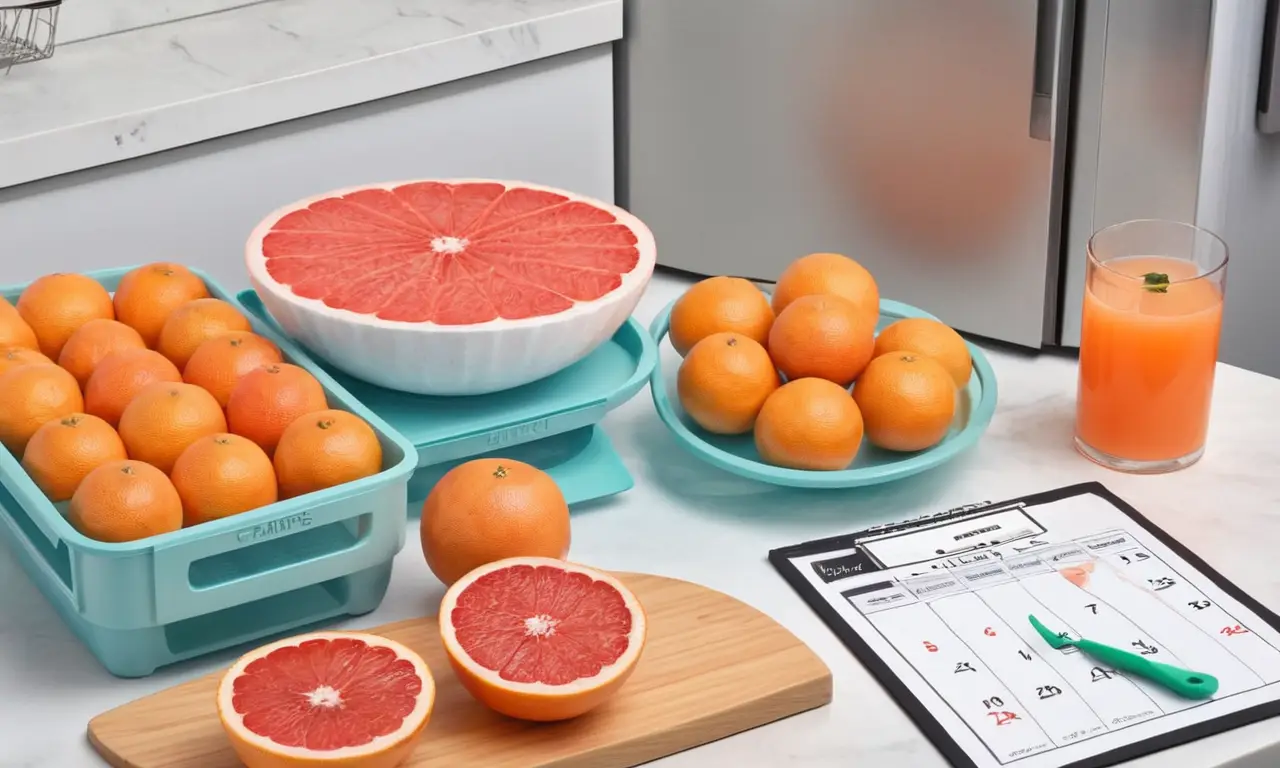
Grapefruit, that tangy and refreshing citrus fruit, is a popular choice for breakfast, snacks, and even cocktails. But how long does this delicious fruit actually last? Understanding the shelf life of grapefruit and proper storage techniques can help you enjoy its vibrant flavor and nutritional benefits for as long as possible. This article will delve into the factors influencing grapefruit freshness, provide expert storage tips, and guide you on identifying spoiled fruit.
This comprehensive guide will explore the various aspects of grapefruit shelf life, from ideal storage conditions to recognizing signs of spoilage. We’ll also compare refrigerator and countertop storage methods and offer practical tips for extending the freshness of your grapefruits. By following these guidelines, you can ensure that your grapefruits remain delicious and nutritious throughout their lifespan.
Grapefruit Shelf Life
The shelf life of a grapefruit depends primarily on how it is stored. When kept in the refrigerator, a whole, unblemished grapefruit can typically last for 1 to 2 weeks. However, if left at room temperature, its freshness will diminish more rapidly, lasting only about 3 to 5 days.
Several factors can influence the shelf life of grapefruits, including ripeness at purchase, storage conditions, and handling practices. Grapefruits that are already slightly soft or bruised upon purchase will have a shorter shelf life compared to firm, unblemished ones. Additionally, exposure to heat, sunlight, and humidity can accelerate spoilage.
Remember that these are general guidelines, and the actual shelf life of your grapefruits may vary depending on individual circumstances.
Storage Tips for Grapefruits

Proper storage is crucial for maximizing the shelf life of your grapefruits. Here are some tips to keep them fresh and flavorful:
- Choose wisely: When selecting grapefruits at the store, opt for firm fruits with smooth, unblemished skin. Avoid those that feel soft, have bruises, or display signs of mold.
Refrigerate promptly: Once purchased, refrigerate your grapefruits as soon as possible to slow down the ripening process and extend their freshness. Store them in a crisper drawer or on a shelf in the refrigerator.
Avoid overcrowding: Don’t overcrowd the refrigerator with other fruits or vegetables, as this can hinder airflow and potentially lead to spoilage.
- Store separately from ethylene-producing fruits: Ethylene gas, produced by fruits like bananas and apples, can accelerate ripening and shorten the shelf life of grapefruits. Store them away from these fruits.
How to Tell if a Grapefruit is Bad
Over time, grapefruits will inevitably spoil. Here are some telltale signs that your grapefruit has gone bad:
- Softness: A ripe grapefruit should feel firm to the touch. If it feels soft or mushy, it’s likely overripe and past its prime.
- Mold growth: Any visible mold on the skin or flesh of the grapefruit indicates spoilage and renders it unsafe for consumption.
Discoloration: A healthy grapefruit has a vibrant yellow or pink rind. If you notice significant discoloration, such as brown spots or patches, it’s a sign of deterioration.
Unpleasant odor: A spoiled grapefruit will emit a sour or fermented smell. Trust your nose – if it smells off, it’s best to discard it.
- Changes in texture: The flesh of a bad grapefruit may become watery, mushy, or stringy.
Refrigerator vs. Countertop Storage

While grapefruits can be stored at room temperature for a short period, refrigeration is the recommended method for extending their shelf life.
Refrigeration slows down the ripening process and inhibits bacterial growth, keeping your grapefruits fresh for longer. When stored in the refrigerator, they typically last for 1 to 2 weeks. Countertop storage, on the other hand, will only keep them fresh for about 3 to 5 days due to their increased susceptibility to spoilage at room temperature.
Ultimately, the best storage method depends on your individual needs and preferences. If you plan to consume your grapefruits within a few days, countertop storage may suffice. However, for longer-term freshness, refrigeration is highly recommended.
Extending Grapefruit Freshness
Here are some additional tips to help extend the shelf life of your grapefruits:
- Wash before storing: Gently wash your grapefruits under cool running water before storing them in the refrigerator. This removes any dirt or debris that could accelerate spoilage.
Use airtight containers: Store your grapefruits in an airtight container or plastic bag to prevent moisture loss and exposure to air, which can contribute to spoilage.
Avoid freezing whole grapefruits: While you can freeze grapefruit juice or segments, freezing whole grapefruits is not recommended as it can significantly alter their texture and flavor.
Conclusion
Understanding the shelf life of grapefruits and implementing proper storage techniques are essential for enjoying this delicious citrus fruit at its peak freshness. By following the guidelines outlined in this article, you can maximize the lifespan of your grapefruits, ensuring they remain flavorful and nutritious throughout their journey from store to table. Remember to choose firm, unblemished fruits, refrigerate them promptly, and monitor them regularly for signs of spoilage. With a little care and attention, you can savor the tangy goodness of grapefruit for weeks to come.
